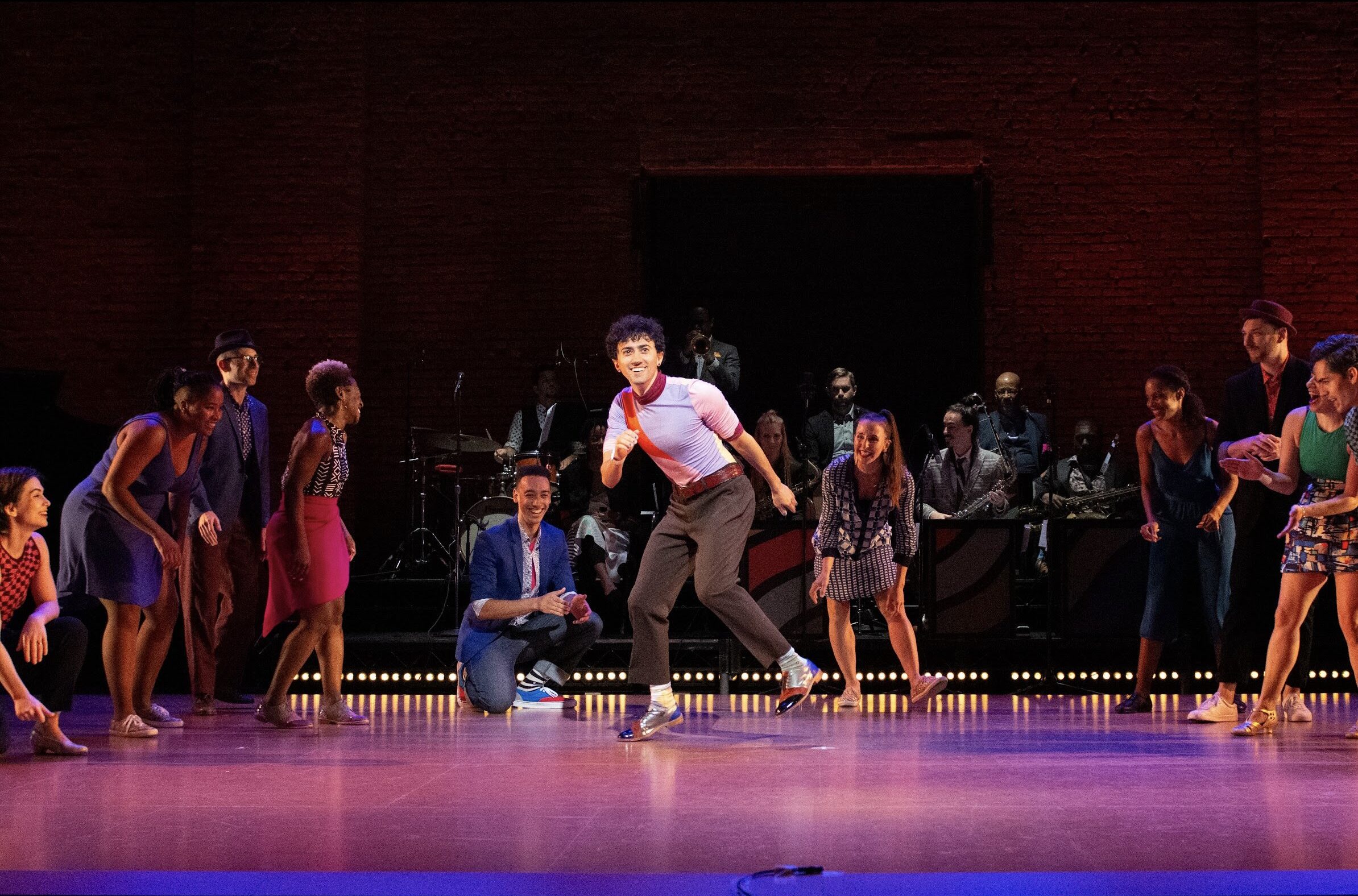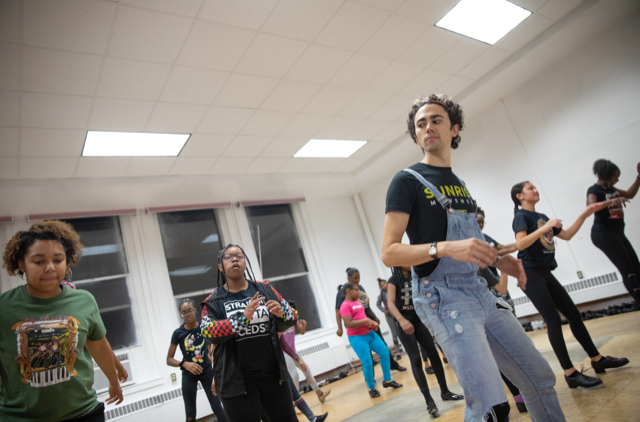
Dancing, whether it’s ballet, hip hop or ballroom, isn’t just movement in space. It’s also movement in time. For choreographer and performer Caleb Teicher, the timing is what makes the movement interesting. “When something is well expressed in relation to music, it can be more impactful than just movement on its own,” Teicher says. “We often talk a lot about the beauty of a particular movement, pose or even a style of dance. But combine the power of that with the power of timing and it totally changes the game.”
Teicher, who uses the gender-neutral pronouns they and them, has always had a knack for rhythm, even before their first dance class. They started drum lessons at 6 years old. Then a few years later, they saw tap dance on television and were immediately enamored by the rhythm and movement working synergistically together. Fast-forward to now and Teicher’s career has gone from strength to strength—being a founding member of Michelle Dorrance’s tap company, Dorrance Dance, a freelance dancer for The Chase Brock Experience and the Bang Group, and even a cast member in the international tour and London production of West Side Story.
But despite their background in music and percussive dance, Teicher didn’t realize how musically driven their dancing was until they ventured to different dance genres. “Tap dance is all about musicality, but I don’t think you fully realize that until you go take a contemporary class where they put music on in the background and say ‘Just move.’”

While most genres have a connection to musicality, that relationship tends to look different from dancer to dancer. Some contemporary styles have more liberty with musicality in terms of going against the music or having the music set the tone, but not the timing. Tap dancers, Teicher explains, have no choice but to think of the music in a more literal sense: “For tap dance, musicality has to be of primary importance because, whether or not you make it a primary importance, you’re going to be heard.” In percussive dance styles, including tap, dancers have to focus not only on the musicality of their physical expressions but also on the musicality of the sounds they make, explains Teicher. “All dance styles make sounds, like you hear the pointe shoe hitting the floor, but tap dance means to sound like something and it means to confidently say ‘Not only am I part of the visual experience, I’m part of the sonic experience,’” says Teicher.
Teicher explains that you lose a lot in your performance, both for the audience and for yourself as a dancer, when you perform without deeply acknowledging the music: “If you’re onstage and you haven’t really thought about all the little accents in the music or how the melody plays off the harmony or how certain tensions work, then you’re missing something that is present,” Teicher says. “It’s sort of like, you walked onstage and there was a set around you, but you’re just going to dance as though those weren’t there.” Additionally, musicality isn’t just hearing the music and having your dancing reflect it. For Teicher, who often performs with live musicians, from pianists to beatboxers, it’s about acknowledging that the musicians are a part of the performance. They are human too.

When it comes to teaching dancers musicality, Teicher has them sit down, listen and soak in the music that they will be dancing to in class. And it doesn’t stop there. While they listen to the music, Teicher sparks a discussion with the students, asking basic questions at first such as “What instruments are being used? Where does the recording take place? Is it live in a concert hall or in a recording studio?” before leading up to more interpretive and academic questions, like “How does the instrument make you feel?” or “Does the song remind you of anything?” Teicher jokes that some discussions might lead to thoughts like “This song sounds like a spy movie,” which could lead a teacher to wonder what to actually do with that information. But this feeling can in fact help inform how to initiate a movement and the overall tone of a performance.
In their own choreographic practice, Teicher always listens to the music on repeat. Even if they plan to perform with a live musician, they get a scratch recording of the song to study while preparing for the performance. In and outside of the studio, Teicher listens and choreographs to a wide range of music, but there is still one genre that Teicher naturally gravitates towards: jazz. “I feel like there are so many nice things to take from jazz. There are melodic elements, harmonic elements, elements of the arrangement, even elements of groove and beats and propulsion,” says Teicher.
Here, Teicher shares some of their favorite songs to teach to:
“Them Changes,” by Thundercat
“For the warm-up, I like to play songs that compel people to move. ‘Them Changes’ is one that fits that description.”
“Jump Session,” by Slim & Slam
“Some of my teaching songs are sentimental: ‘Jump Session’ is the first song I ever heard in my first-ever Lindy Hop lesson.”
“Witchcraft,” by The Oscar Peterson Trio
“Witchcraft is a recording my mentor, David Rider, used for shuffle exercises.”
“Black Beauty,” by Duke Ellington
“Black Beauty is the tap routine I teach most frequently these days. There’s so much to appreciate in this recording by Duke Ellington. It’s simpler and sparser than other compositions and arrangements, but each note played by each player seems to be imbued with expression and meaning. For my brain, it’s just enough information to keep me engaged at every step, but not too much as to overwhelm my head and heart.”
“C Jam Blues,” by various artists
“‘C Jam Blues’ is on this playlist three times because I often will play different versions of the same song to activate the critical and cognitive listening skills of dance students. I often ask, ‘What’s different about this recording from the last one? Tempo? Feel? Instrumentation?’”





